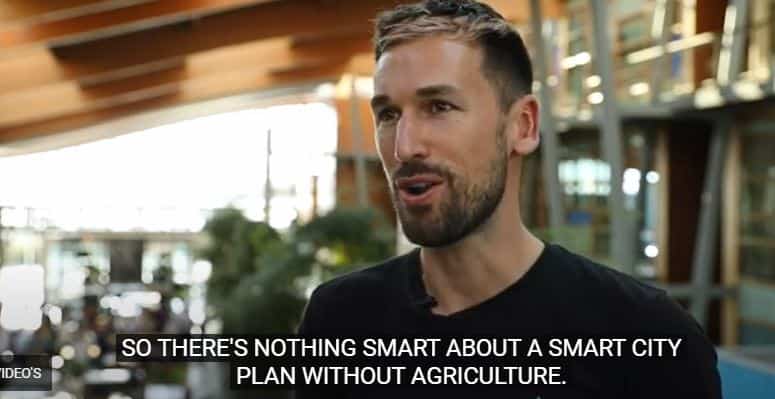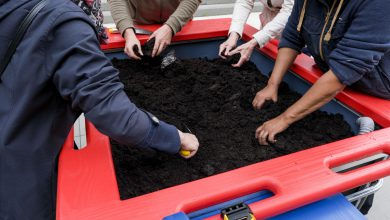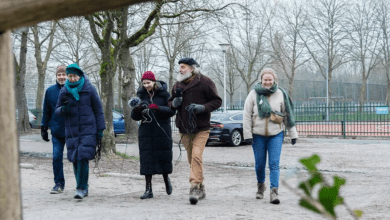
There is no standard approach to urban agriculture. Henry Gordon Smith, CEO of Agritecture, explains how each city requires a different plan. But regardless of strategy, all cities have one thing in common: From restaurants to allotments to supermarkets, changes in the food system can and should be made everywhere.
Students also designed a modular urban agriculture solution, an affordable housing complex has its own rooftop farm and how Singapore is investing in food security.
Between home, work or study and transportation, many people spend most of their time indoors. Henry Gordon Smith explains why – in a phase of a changing climate and a more urbanized society – we need to bring greenery to us in the city, and how we can turn that into an opportunity to change our food system.
The importance of restoring how cities used to engage in agriculture
Henry Gordon Smith is the founder and CEO of Agritecture, a global urban agriculture consulting firm whose mission is to bring more agriculture to cities. According to Henry, the biggest misconception about urban agriculture is that it cannot be commercial or profitable. “When people hear “urban agriculture,” they usually think of community gardens and school gardens, and are less likely to think of high-tech greenhouses, high-tech vertical farms or all the myriad ways you can grow food in cities. Moreover, they don’t seem to think it can be a meaningful contribution to the food supply. I think it’s really important that we recover how cities used to engage in agriculture. When humans developed cities, we developed them near where people needed food to survive. But then we started to separate agriculture and cities. We said, “Agriculture? That’s not for cities. That’s for the countryside.” But now, because of climate change and other shocks to the system, like the pandemic, we’ve realized that we need to bring agriculture back into cities.”
Urban agriculture and the smart city movement
Henry is enthusiastic about the smart city movement, which is making cities more connected and intelligent through technology and data. But we must ask ourselves whether a city can really be smart without agriculture. Being smart means thinking long-term. It means being prepared. “If we take Singapore as an example, they import 90 percent of their food, so they represent cities on the extreme edge of a food security problem. They don’t have enough space. So they also represent a city that cannot grow food by just planting outside. They will have to use advanced technologies to do that.”
Singapore, according to Henry, is a good example of how cities can grow food even when space is limited. “The first step Singapore has taken is the recognition of urban agriculture. They have developed policies, zoning and incentives around urban agriculture that say, this is allowed on top of a parking garage or in a vacant area. They have a grant program that is very mature, significant millions of dollars for international companies to set up pilots in Singapore as part of the grant. They also invest in talent. We need talent in the city to operate these farms and help them scale up. If you include talent, policy and funding, then you are leading the way in that category. And Dubai is doing that. Paris is doing that. New York does that, too. But I would say Singapore has become the front-runner with all the available infrastructure that is needed.”
A customized approach for each city
Singapore’s approach cannot simply be copied to other cities, Henry explains. Each city has its own challenges when it comes to feeding its citizens. He cites Dallas as an example. While there is plenty of food in Dallas, it is not easily accessible to the most vulnerable. “In the Dallas context, you need more community aspects to the urban agriculture program. So low tech greenhouses on vacant lots, outdoor plots and trails to create access to the land. More farms in schools so students get fresh food daily. These are the initiatives that focus more on the community aspect and less on technology.”
Restoring our relationship with nature
“We have a society growing up in cities,” Henry concludes. “I was born in Hong Kong. I grew up in Hong Kong and in Tokyo. I didn’t have access to nature. And I think I represent most of society’s future in the sense that they grow up in cities, far away from green spaces. But we need green space in our lives. And if urban indoor spaces are part of our future, then we need to bring green into these indoor spaces. In addition to greening our indoor spaces, why not create an output that we can consume?”





